Your cart is currently empty!
Tag: bees
-
Bees on My Mind

On Tuesday I attended a webinar on Providing Habitat for Wild Bees on Organic Farms put on by eOrganic on extension.org. They are a great resource for learning about all sorts of organic farming practices. Recently they had a webinar on managing striped cucumber beetles in organic cucurbits, and another on the management of spotted wing drosophila. Such fun and exciting topics. They also have a handy YouTube Channel with videos of many of their webinars.
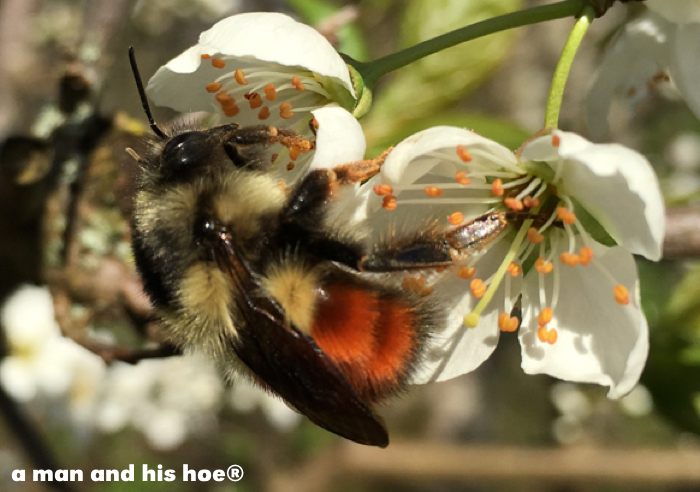
With this week’s snow melting quickly, I dream of warmer days when bees by the thousands fill the spring air with their constant buzzing. The pictures of bees in this post are of bees in my gardens from springs and summers past. According to the presenters of the webinar, the best things you can do to encourage bees is having a large variety of flowers, especially flowers native to your area, in bloom through spring, summer, and fall. And since most bees, more than 70%, nest in the ground, make sure you have plenty of undisturbed ground and rockeries for them to nest.
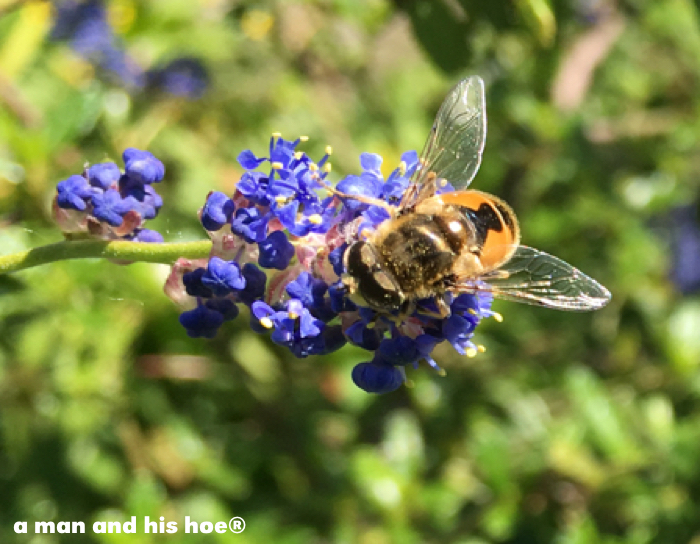
I was disappointed to learn that identifying bees down to their specific species is difficult. It usually requires examining them under a microscope, which means catching and killing them. For example, according to Joseph S. Wilson & Olivia Messinger Carril in their detailed guide to North American bees, The Bees In Your Backyard, one of the key features for identifying Andreninae bees are the two sutures at the base of their antennae, but you need a microscope to clearly see them. My best hope at identifying the bees I see is to take close-up photos of the bees, not always easy as they don’t like to sit still for me, and examining the photos later.

A nightmarish creature I learned about in The Bees In Your Backyard are Twisted-Wing Insects, Strepsiptera. The females of these insects live in the backs of bees (and other hapless insects), with only a bit of their head exposed. They have no legs, no wings, and no eyes. Males fly about for just a few hours and when they spot a bee with a Strepsiptera female head sticking out of its body, they will mate with it by stabbing through the back of it’s head and injecting semen into her body. The semen flows through her body, eventually finds her ovaries, and fertilizes her eggs. The eggs hatch and survive by eating their mother. After they gobble her up, the tiny grubs emerge from the bee, and look for a new bee or insect to attack.
Strepsiptera are a good reason not to be religious. I don’t think you want to count on the mercy of a diety who conjures up such frightening creatures.


-
It’s Hard to Have a Bad Day When …
A favorite saying of mine is Yunmen’s words, “Every day is a good day 是是良日.” It’s hard to have a bad day when it starts by discovering a nearly-ripe raspberry. More-than-we-can-eat supplies of raspberries are around the corner.
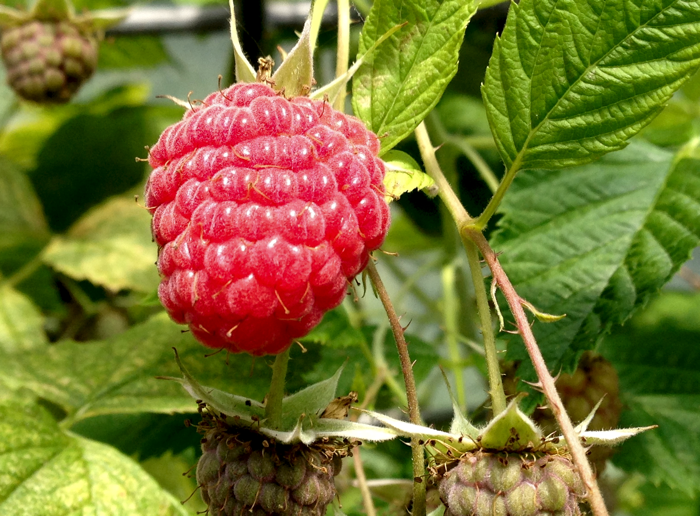
And it’s hard to have a bad day when your bicycle ride back from your post office is as beautiful as mine. The rest of the photos on this page are of places I pedal by on my way home from our post office. For a June day, a sky this blue is something people throw virgins into volcanoes for. Most years, June is a month to be endured under slate-colored, sodden skies. Usually we don’t see this amount of blue until mid July. About now, we are scraping the moss out of our hair and between our toes. Not this year.

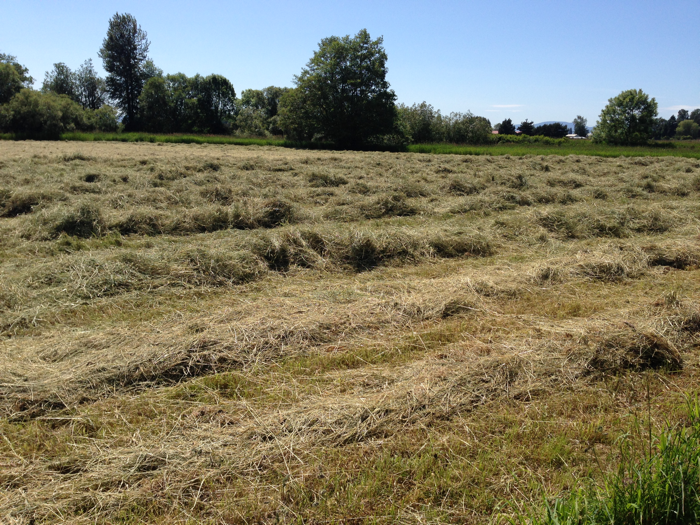

The hay fields are ready for cutting. At this rate, the cows will be happy all winter long.

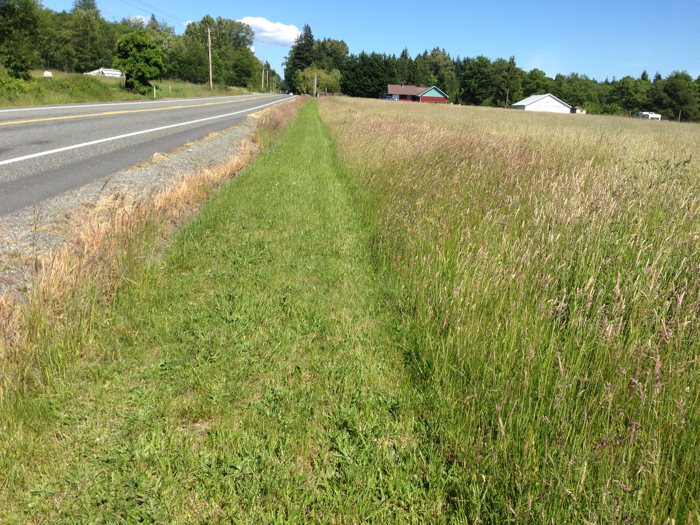
This afternoon, it is the bees who are gorging. I pass this climbing hydrangea nearly every day. It is in full bloom and buzzing with bees. Today I had to stop and enjoy it for a few minutes. May you live in even more beautiful surroundings than I do.
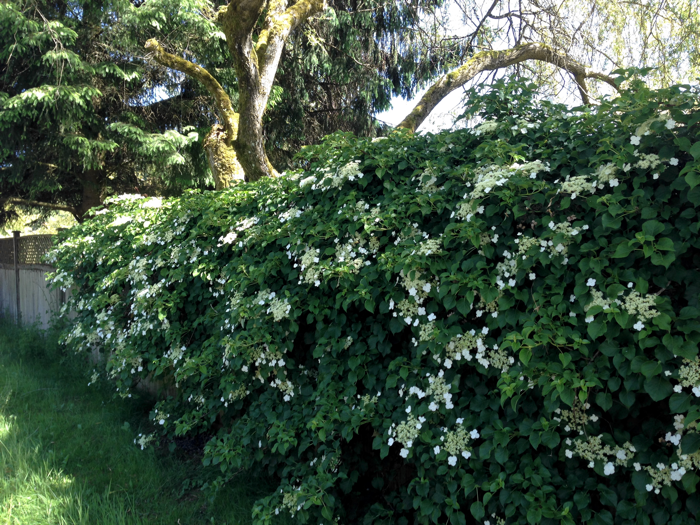
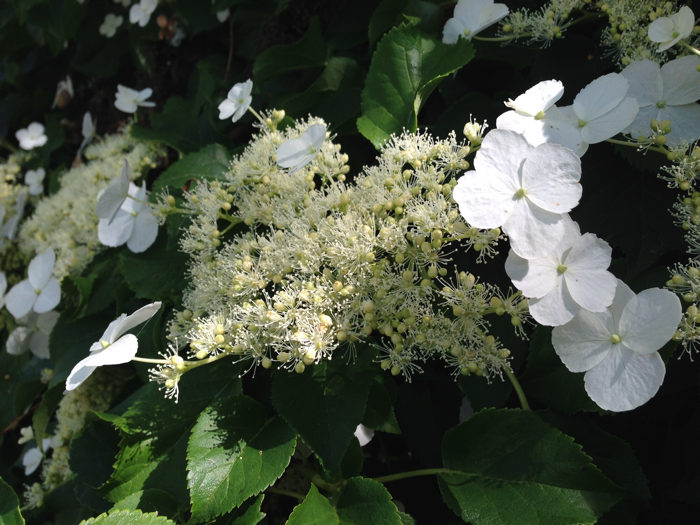

-
How Apple Pie Starts
This is how apple pie starts – as a small flower. It’s late April and the apple trees are blooming several weeks early. Soon, wild bees will pollinate these flowers, and all summer long the apples will soak in the sunshine and grow until they are ready, in early fall, to be eaten right off the tree or made into apple pie. From now into fall, the air buzzes with the sound of wild bees. According to Wild Bees as Alternative Pollinators, by the Penn State:Fruit Research and Extension Center, there are “3,500 bee species other than the honey bee which are also important pollinators of most specialty crops in the U.S.” 80% of bees are ground nesting, so it’s critical to have undisturbed land to provide habitat for these bees to thrive.
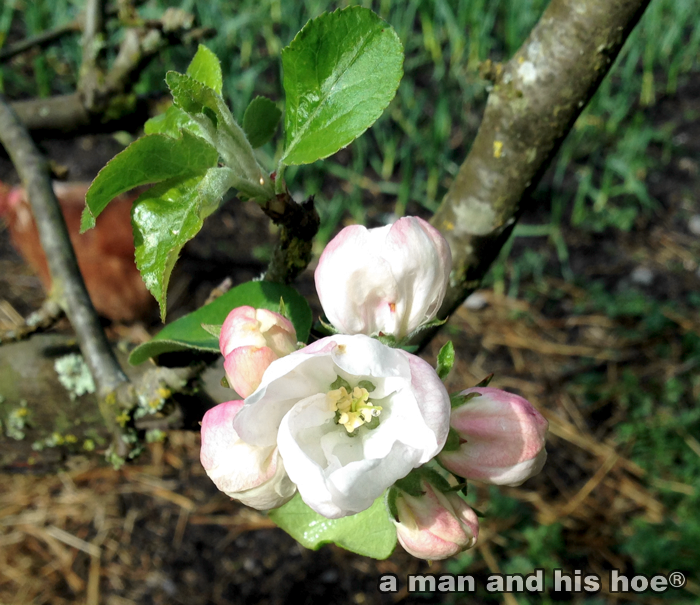
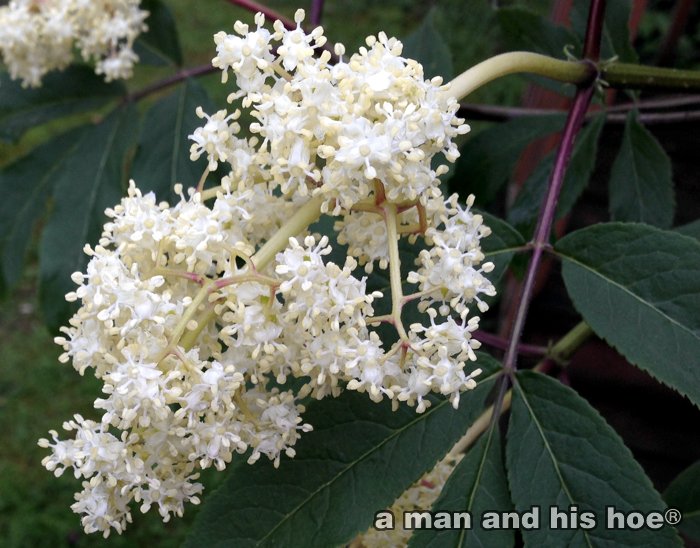
The elderberry bushes are also in full bloom. Come June, they will provide plenty of red fruits for wild birds to eat.
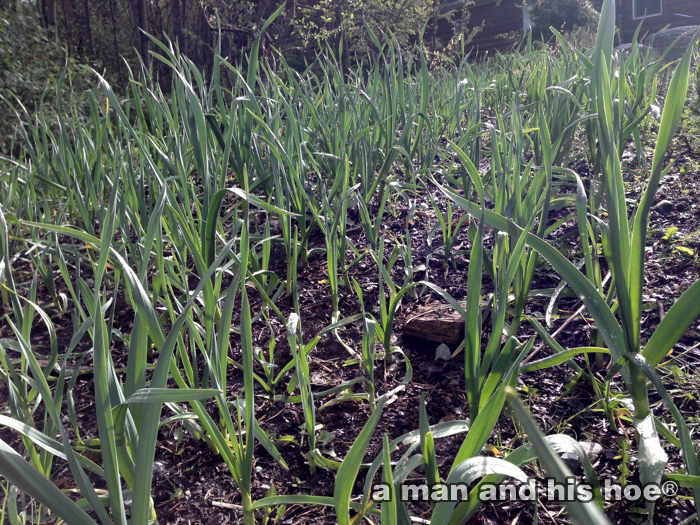
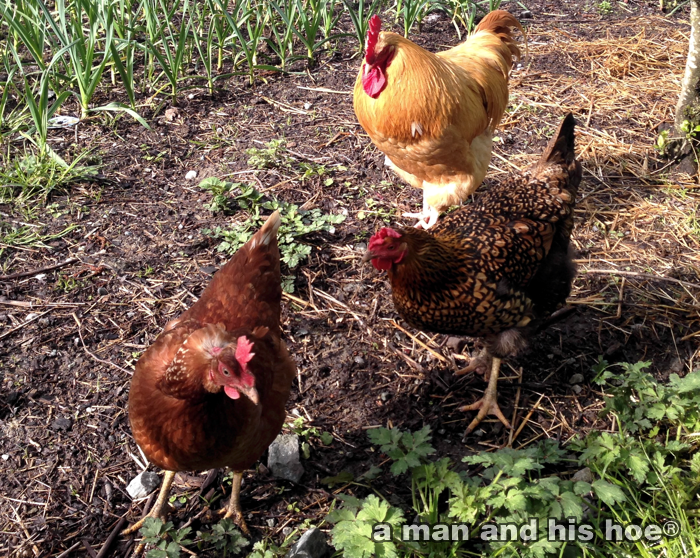
The garlic patch is nearly knee high. Lucky, Billy, and Imelda are looking for something to eat along the edges of the garlic patch. Lucky is the most curious hen at a man and his hoe®. No matter where we go, she is sure to come along to see what we are doing. And Imelda seems to have been smitten with Billy, the five year old rooster. Wherever he goes, she follows. At a typical egg or poultry farm, hens and roosters never get to develop these romances. It’s one of the benefits of being a chicken at a man and his hoe®.Articles on wild bees:
- Wild bees make honey bees better pollinators – UCBerkeleyNews
- Wild bees enhance honey bees’ pollination of hybrid sunflower Sarah S Greenleaf and Claire Kremen – Proceedings of the National Academy of Sciences of the USA
- Attracting wild bees to farms is a good insurance policy Michigan State University
- Wildflowers and natives to attract bees and pollinators
- The Other Bees by Kristin Ohlson in modern farmer